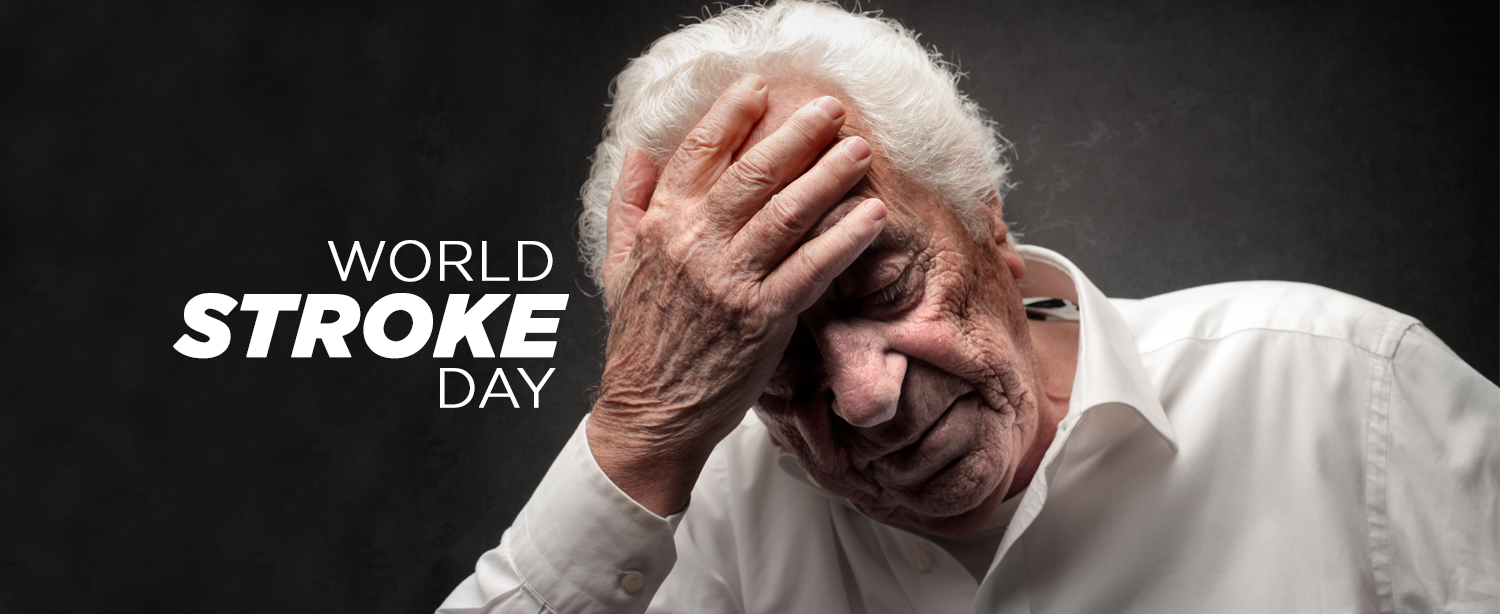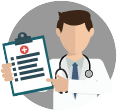A stroke occurs when a part of the brain loses its blood supply and stops working. This causes the part of the body that the injured brain controls to stop working. A stroke also is called a cerebrovascular accident, CVA, or “brain attack.”
The types of strokes include:
- Ischemic stroke (part of the brain loses blood flow)
- Hemorrhagic stroke (bleeding occurs within the brain)
Transient ischemic attack, TIA, or mini stroke -The stroke symptoms resolve within minutes, but may take up to 24 hours on their own without treatment. This is a warning sign that a stroke may occur in the near future.
From onset of symptoms, there is only a 3 to 4 1/2 hour window to use clot-busting drugs (thrombolytics) to try to restore blood supply to the affected part of the brain. Stroke is diagnosed by the patient’s symptoms, history, and blood and imaging tests. The prognosis and recovery for a person that has suffered a stroke depends upon the location of the injury to the brain.
Remember FAST if you think someone might be having a stroke:
- Face drooping
- Arm weakness
- Speech difficulty
- Time to call emergency
A stroke is a medical emergency because strokes can lead to death or permanent disability. There are opportunities to treat ischemic strokes but that treatment needs to be started in the first few hours after the signs of a stroke begin. The patient, family, or bystanders, should call emergency medical services immediately if they suspect a stroke.
Risk factors of stroke:
Overall, the most common risk factors for stroke are:
- High blood pressure.
- High cholesterol.
- Smoking.
- Diabetes.
- Family history.
- Age.
Heart conditions like atrial fibrillation, patent foramen ovale, and heart valve disease can also be the potential cause of stroke.
Stroke Symptoms and Signs:
The symptoms of a stroke vary depending upon the area of the brain affected by a lack of oxygen. All strokes involve symptoms that relate to impairment of nerve function. The symptoms typically arise suddenly and most commonly occur on one side of the body. Symptoms and signs of stroke can include:
- Acute change in level of consciousness or confusion.
- Acute onset of weakness or paralysis of half or part of the body
- Numbness of one half or part of the body
- Partial vision loss.
- Tingling or weakness.
- Headache, nausea, and vomiting.
- Double vision.
- Difficulty speaking or understanding speech.
- Difficulty with balance and vertigo.
Here are some Stroke Myths and facts:
-
- Myth
- Stroke cannot be prevented.
- There is no treatment for stroke.
- Stroke only affects the elderly.
- Stroke recovery only happens for the first few months after a stroke.
- Strokes are not hereditary.
-
- Fact
- Up to 80 percent of strokes are preventable.
- At any sign of stroke call Emergency services, treatment may be available.
- Stroke can happen to anyone at any time.
- Stroke recovery is a lifelong process.
- Family history of stroke increases your chance for stroke.
Prevent stroke attacks:
You can fight stroke on many fronts. Here are a few changes in your daily lifestyle to help prevent strokes:
- Know and control your blood pressure.
- Don’t smoke; stop if you do.
- Lose weight if needed.
- Become more active.
- Identify and manage atrial fibrillation.
- Be aggressive about treating a transient ischemic attack (TIA, or mini-stroke).
- Treat circulatory problems like peripheral artery disease, sickle cell disease, or severe anemia.
- Know and control your blood sugar and cholesterol.
- If you drink alcohol, do so in moderation.
- Adopt a healthy diet low in sodium and rich in potassium.
- Know the warning signs of stroke and respond immediately.
Is someone around you having a stroke attack? Call our Emergency department on 91-22-3091-9191. Act fast and contact our Stroke clinic immediately. Please find below link for more details:
https://www.kokilabenhospital.com/departments/clinicsatkh/strokeclinic.html


